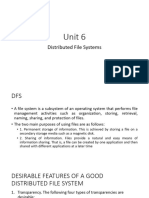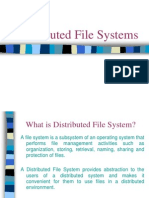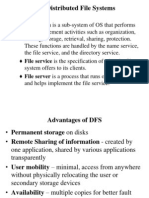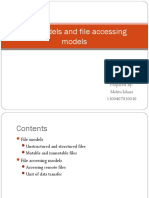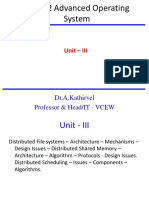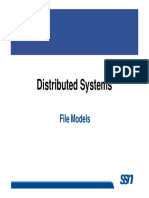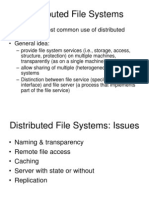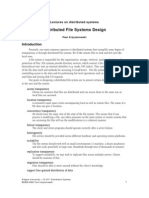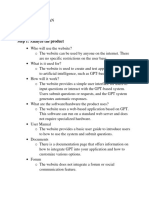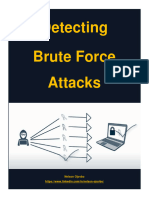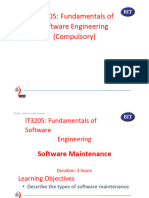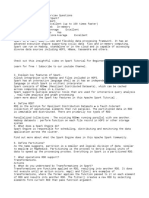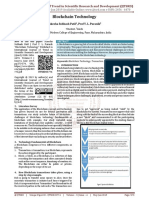0% found this document useful (0 votes)
126 views15 pagesDistributed UNIT 5
The document discusses file models, file accessing models, file sharing semantics, and file caching schemes in distributed systems. It explains unstructured and structured file models, mutable and immutable file models, remote service and data caching file accessing models, UNIX and other file sharing semantics, and different locations for file caching including server main memory, client disk, and client main memory.
Uploaded by
somayajula venkata srinivasCopyright
© © All Rights Reserved
We take content rights seriously. If you suspect this is your content, claim it here.
Available Formats
Download as PDF, TXT or read online on Scribd
0% found this document useful (0 votes)
126 views15 pagesDistributed UNIT 5
The document discusses file models, file accessing models, file sharing semantics, and file caching schemes in distributed systems. It explains unstructured and structured file models, mutable and immutable file models, remote service and data caching file accessing models, UNIX and other file sharing semantics, and different locations for file caching including server main memory, client disk, and client main memory.
Uploaded by
somayajula venkata srinivasCopyright
© © All Rights Reserved
We take content rights seriously. If you suspect this is your content, claim it here.
Available Formats
Download as PDF, TXT or read online on Scribd
/ 15
